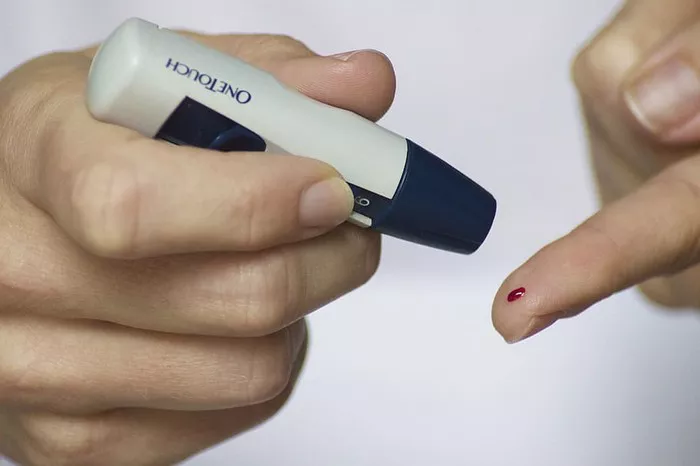Type 1 diabetes (T1D) requires a multifaceted approach to management, encompassing insulin therapy, blood glucose monitoring, physical activity, and dietary considerations. Nutrition plays a crucial role in blood sugar control and overall health for individuals with T1D, but navigating food choices can be challenging. In this comprehensive guide, we explore the principles of healthy eating for type 1 diabetes, providing practical tips, meal planning strategies, and delicious recipes to help individuals with T1D optimize their nutrition and well-being.
Understanding the Role of Nutrition in Type 1 Diabetes Management
Balancing blood sugar levels is essential for individuals with T1D to prevent hyperglycemia (high blood sugar) and hypoglycemia (low blood sugar) while promoting overall health and well-being. Nutrition plays a central role in achieving this balance by providing essential nutrients, managing carbohydrate intake, and optimizing insulin dosing.
Carbohydrates are the primary macronutrient that affects blood sugar levels, as they are broken down into glucose during digestion and absorbed into the bloodstream. Therefore, monitoring carbohydrate intake and matching insulin doses to carbohydrate consumption is a key aspect of T1D management.
In addition to carbohydrates, protein and fat also influence blood sugar levels, albeit to a lesser extent. Protein has a modest effect on blood sugar and typically requires insulin for metabolism, while fat slows down the absorption of carbohydrates, resulting in a more gradual rise in blood glucose levels.
The Basics of Carbohydrate Counting
Carbohydrate counting is a fundamental skill for individuals with T1D, allowing them to estimate the amount of carbohydrates in foods and adjust their insulin doses accordingly. The carbohydrate content of foods is measured in grams (g), and one serving of carbohydrate is equivalent to approximately 15 grams.
Common carbohydrate-containing foods include:
1. Starchy Foods: Bread, rice, pasta, potatoes, and grains.
2. Fruits: Apples, bananas, oranges, berries, and melons.
3. Dairy Products: Milk, yogurt, and kefir.
4. Sweets and Desserts: Cookies, cakes, candies, and ice cream.
5. Legumes: Beans, lentils, chickpeas, and peas.
6. Vegetables: Carrots, peas, corn, and starchy vegetables.
When planning meals and snacks, individuals with T1D can use carbohydrate counting to determine the appropriate insulin-to-carbohydrate ratio (ICR) and calculate insulin doses based on their blood sugar levels, anticipated carbohydrate intake, and insulin sensitivity.
Practical Tips for Healthy Eating with Type 1 Diabetes
1. Focus on Whole Foods: Emphasize whole, minimally processed foods, such as fruits, vegetables, whole grains, lean proteins, and healthy fats. These nutrient-dense foods provide essential vitamins, minerals, fiber, and antioxidants while minimizing added sugars, sodium, and unhealthy fats.
2. Monitor Portion Sizes: Pay attention to portion sizes and serving sizes to avoid overeating and maintain balanced meals. Use measuring cups, spoons, and food scales to accurately portion foods and track carbohydrate intake.
3. Include Protein and Healthy Fats: Incorporate lean proteins, such as poultry, fish, tofu, beans, and legumes, into meals and snacks to promote satiety and stabilize blood sugar levels. Likewise, include sources of healthy fats, such as avocados, nuts, seeds, olive oil, and fatty fish, to support heart health and enhance flavor.
4. Choose Low-Glycemic Index (GI) Foods: Select carbohydrates with a low glycemic index, which are digested and absorbed more slowly, resulting in gradual increases in blood sugar levels. Examples of low-GI foods include non-starchy vegetables, whole grains, legumes, and fruits with intact fiber.
5. Space Carbohydrates Throughout the Day: Distribute carbohydrate intake evenly throughout the day to prevent large fluctuations in blood sugar levels. Aim for balanced meals and snacks that contain a combination of carbohydrates, protein, and healthy fats to optimize glycemic control.
6. Stay Hydrated: Drink plenty of water throughout the day to stay hydrated and support overall health. Limit sugary beverages, such as soda, fruit juice, and sweetened teas, which can cause rapid spikes in blood sugar levels.
7. Be Mindful of Alcohol: If consuming alcohol, do so in moderation and be mindful of its effects on blood sugar levels. Alcohol can cause hypoglycemia, especially when consumed on an empty stomach or in combination with insulin or medications.
8. Plan Ahead for Meals and Snacks: Plan meals and snacks in advance to ensure a balanced and nutritious diet. Consider using meal planning tools, such as carbohydrate counting apps, food diaries, and recipe websites, to simplify meal preparation and optimize blood sugar management.
Meal Planning Strategies for Type 1 Diabetes
Creating balanced and nutritious meals can be simplified with the following meal planning strategies:
1. Breakfast: Start the day with a balanced breakfast that includes a source of protein, such as eggs, Greek yogurt, or tofu, along with whole grains, such as oats, whole wheat toast, or quinoa, and a serving of fruit.
2. Lunch: Enjoy a satisfying lunch with a lean protein, such as grilled chicken, turkey, or fish, paired with a variety of non-starchy vegetables, whole grains, such as brown rice or whole wheat pasta, and a small serving of healthy fats, such as avocado or nuts.
3. Dinner: Prepare a nutritious dinner with a balanced combination of protein, vegetables, and carbohydrates. Consider options such as grilled salmon with roasted vegetables and quinoa, stir-fried tofu with mixed vegetables and brown rice, or lean beef chili with beans and salad.
4. Snacks: Choose nutrient-rich snacks that provide a balance of carbohydrates, protein, and healthy fats to help stabilize blood sugar levels between meals. Examples include apple slices with almond butter, Greek yogurt with berries, or raw vegetables with hummus.
5. Hydration: Stay hydrated throughout the day by drinking water, herbal tea, or infused water with fresh fruits and herbs. Limit sugary beverages and caffeinated drinks, which can contribute to dehydration and blood sugar fluctuations.
Recipe Ideas for Type 1 Diabetes-Friendly Meals
1. Quinoa Salad with Grilled Chicken and Vegetables: Prepare a colorful salad with cooked quinoa, grilled chicken breast, cherry tomatoes, cucumber, bell peppers, red onion, and fresh herbs. Drizzle with a homemade vinaigrette made with olive oil, lemon juice, garlic, and Dijon mustard.
2. Vegetable Stir-Fry with Tofu and Brown Rice: Stir-fry tofu cubes with a variety of colorful vegetables, such as broccoli, bell peppers, snap peas, carrots, and mushrooms. Season with soy sauce, ginger, garlic, and sesame oil, and serve over cooked brown rice.
3. Turkey and Avocado Wrap: Spread whole wheat tortillas with mashed avocado and layer with sliced turkey breast, lettuce, tomato, cucumber, and shredded carrots. Roll up tightly and slice into pinwheels for a convenient and nutritious lunch option.
4. Salmon with Roasted Vegetables and Quinoa: Season salmon fillets with lemon zest, garlic, and herbs, and bake until flaky and tender. Serve alongside roasted vegetables, such as Brussels sprouts, sweet potatoes, and cauliflower, and cooked quinoa for a balanced and satisfying dinner.
5. Greek Yogurt Parfait with Berries and Granola: Layer Greek yogurt with fresh berries, such as strawberries, blueberries, and raspberries, and sprinkle with granola or chopped nuts for added crunch and texture. Drizzle with honey or maple syrup for a touch of sweetness.
Conclusion: Empowering Individuals with Type 1 Diabetes Through Nutrition
Nutrition plays a pivotal role in the management of type 1 diabetes, influencing blood sugar control, overall health, and quality of life. By adopting a balanced and individualized approach to eating, individuals with T1D can optimize their glycemic control, reduce the risk of complications, and enjoy delicious and nutritious meals that support their well-being.
By focusing on whole foods, monitoring portion sizes, incorporating protein and healthy fats, and spacing carbohydrates throughout the day, individuals with T1D can maintain stable blood sugar levels and achieve their health goals. Meal planning strategies, recipe ideas, and practical tips provide valuable tools for navigating nutrition with confidence and ease.
Through education, support, and empowerment, individuals with type 1 diabetes can take control of their health and embrace a lifestyle that promotes long-term wellness and vitality. By making informed food choices and prioritizing self-care, individuals with T1D can thrive and live life to the fullest, one delicious bite at a time.



























